Overseeing proper operation and maintenance is important to any wind turbine’s reliability and durability. While it is often tempting to simply swap new parts for old, it may be more beneficial to upgrade them to prevent recurring damage and costly repairs. The right upgrades should improve a turbine’s performance and increase its return on investment. A few examples demonstrate how upgrades have improved components in widely-deployed systems.
Keep the gearbox in check
Megawatt-class turbines with a three-point drivetrain support structure are good candidates for upgrades. In this design, one point refers to the large thrust and radial-load main bearing that carries rotor forces. Two other points include the large bushings on either side of the gearbox that carry torque reactions. If the main bearing fails and is not detected in time, the situation becomes critical and can result in extended downtimes. Bearing failure lets the main shaft, including the rotor, move inward toward the gearbox. Added wind thrust loads further stress the rotor, pushing the entire gearbox on one particular model as far as 9 mm back until a steel support structure finally halts its displacement. As the gearbox stops against this structure, the drivetrain’s thrust load transmitts to the planetary carrier bearings. This may lead to serious damage to the gearbox bearings. If a solution to prevent the shaft’s movement is not implemented, gearbox replacement is inevitable.
Engineers with our company offer an upgrade to solve this problem. It involves two inductive proximity switches mounted to the gearbox and wired to the control system. These sensors transmit fault messages when the drivetrain deviates from its original placement and prompts the control system to shut the turbine down to prevent serious and costly gearbox damage. The sensors also notify the remote monitoring system to alert the operator to the problem. The turbine’s operation can resume only after the gearbox’s position has been inspected to determine the degree of damage to the main bearing and gearbox.
Although the unscheduled maintenance that follows represents a considerable investment, it is still lesser than the cost of a gearbox replacement. Proactively monitoring the gearbox position allows for immediate remedial actions to prevent severe damage and reduce significant downtime later.
Extending blade bearing life
A blade-bearing seal protects the bearing in the hub, on which the blade pitches. The seal, located on the stationary outer race of the pitch bearing, should keep water out and grease in on the moveable inner race. A damaged seal often allows the discharge of bearing grease, which then contaminates the equipment or ground. As a result, grease must be replenished often. A greater hazard can occur if rain enters the rotor-blade bearing and mixes with the lubricant. This shortens bearing life, which may also be affected by corrosion. Water penetrating the seal can also increase error messages from the pitch controller and failure of pitch drives or pitch bearings. Problems become more complicated replacing the seals due to their installation positions. Considerable costs can occur when repairing these types of problems.
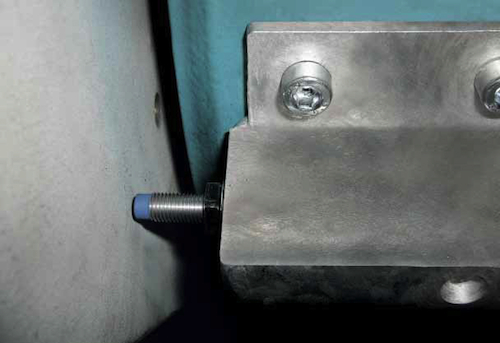
An inductive proximity sensor is installed on the torque arm of the gearbox. The sensor tip (blue) is facing to the left toward the gearbox support structure and the steel portion on the right is the sensor housing and mounting bracket.
To avoid such issues, a rotor-blade bearing seal must be protected against environmental influences. Our engineers worked with Dichtomatik GmbH—a seal design and engineering company—to develop a concept for this problem. A cover or sealing hood now protects pitch bearings against water intake. It resists oil and grease, and is easy to install and service. Furthermore, a secure fit is needed to handle significant centrifugal forces and large tolerances.
Giving wear the brush-off
Replacing carbon brushes used in most turbines is more time consuming than it should be due to an original brush holder. When removing the brush holder to replace brushes, many of its small parts may fall into the slip-ring compartment. The generator arrangement, however, makes fallen components difficult to reach without dismantling the slip ring. The added work contributes to lost time and higher service costs. Furthermore, the original mounting design causes the brushes to wear unevenly during operation. As a result, the brushes have a limited service life, only about 12 months.
A new attachment significantly decreases the time required to replace carbon brushes. It also eliminantes many of the small parts commonly lost in the slip-ring compartment. The mounting upgrade, coupled with a brush configuration change, prevents the brushes’ irregular wear. Field trials have shown the upgrade increases service life to 18 months on average.
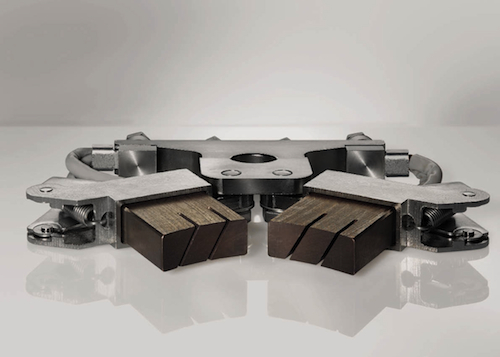
A new holder design can help decrease time required to replace carbon brushes, and eliminate the risk of small parts falling into the slip-ring compartment. A mounting upgrade, along with a brush configuration change, can increase the unit’s service life.
Cooling improves turbine availbility
Turbines located near sea coasts can be seriously compromised by salt in the air that leads to corrosion of components and accumulations on transformers. The build-up of salt on a transformer can result in substantial damage and failure requiring replacing the unit every two years, a substantial investment.
A solution was found in better ventilating a turbine’s transformer. The upgrade uses deflectors to direct air through the nacelle, so less of it enters the transformer room. In addition, a controlled fan channels only 20% of the air into the transformer. This is sufficient to maintain cooling and prevent the formation of salt deposits in transformers, thereby considerably increasing their service life and reducing maintenance and operating costs.
Regaining control at the top
For many turbines, operation is limited to a control panel located at the base of the tower. For technicians to complete regular maintenance and troubleshoot problems, one tech is always required at the base of the tower to adjust operating parameters through a computer. This results in higher downtimes and greater maintenance costs because one less technician is working in the nacelle.
Portable operating consoles have been developed to directly interface with the controls in the nacelle. This lets a full team work in the nacelle by giving them primary control of the turbine during maintenance. Interfacing with its turbine-control system lets technicians troubleshoot, test, and get immediate results when diagnosing issues. When finished, the portable unit is packed up and taken to the next site. The portable unit reduces time required for maintenance and improves overall turbine availability through more accurate diagnosis and monitoring of turbine operating conditions.
Upgrades, such as these, to various wind turbine systems help extend service life and reduce unplanned maintenance costs. Greater wind-turbine reliability will allow for continued implementation of this renewable resource for many coming years.
WPE
Filed Under: Turbines

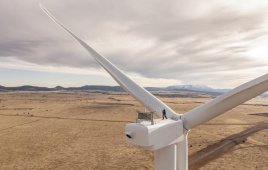

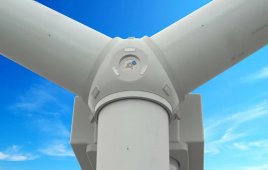
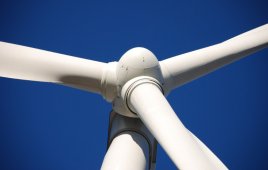
Wind Turbines are designed to rotate to face the wind and extract the maximum possible amount of power from it.
more information:http://www.moflon.com
Slip ring is one of the important parts of the automation control system, and its performance is directly related to the stability of the whole system running, even normal operation
more information:http://www.moflon.com